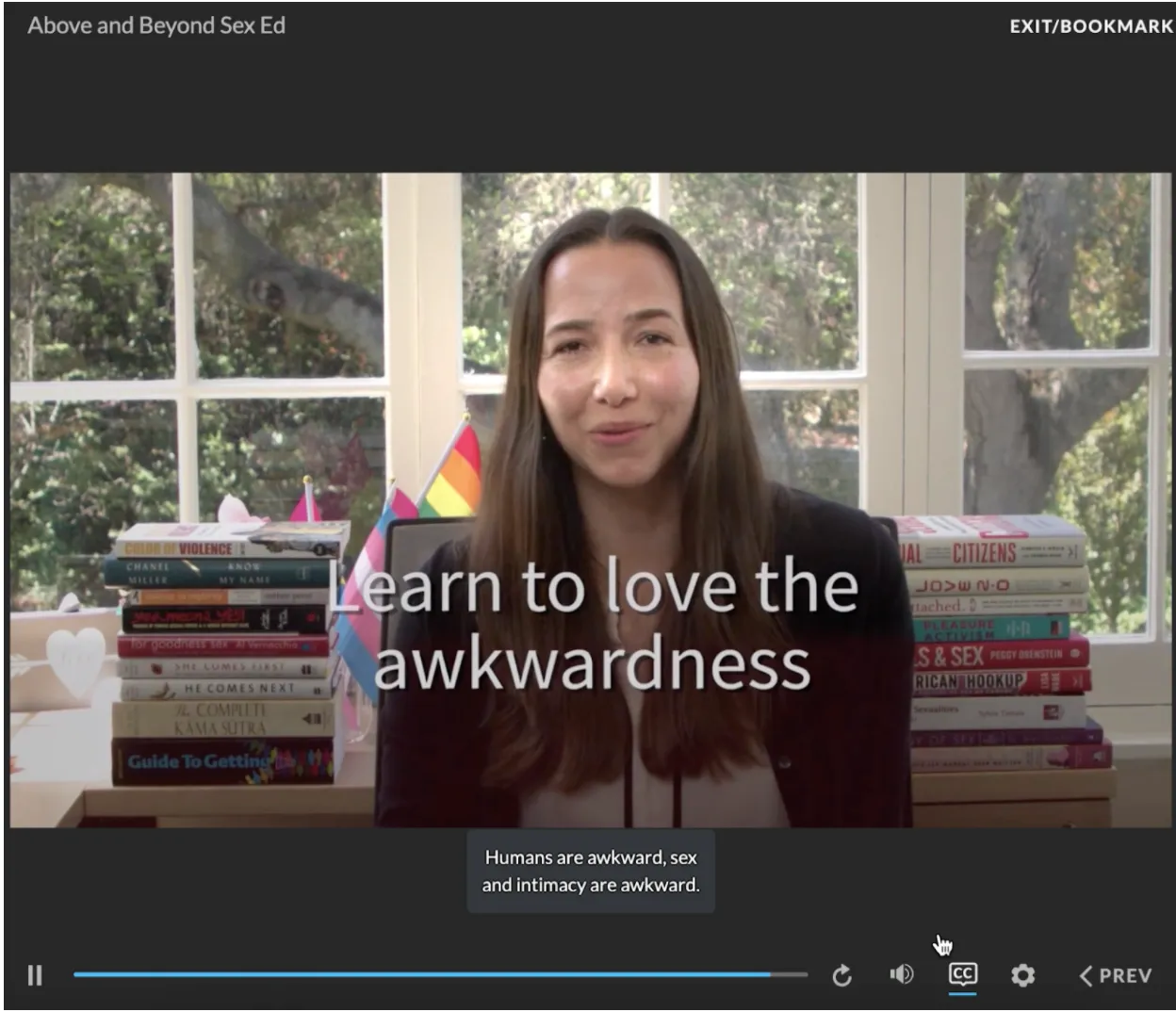Table of Contents
In September 2019, I waited outside Memorial Auditorium (MemAud) to undergo a "transformative experience:” Beyond Sex Ed. The festivities began with a presentation on the overlooked aspects of sex (“skin hunger!” “fantasy!” “sensuality!”), and continued on with upperclassmen taking the stage and recounting their sexual experiences in excruciating detail.
Don't get me wrong–these stories were honest and artfully told. But they were also graphic, uncomfortable to listen to, and, worst of all, mandatory. And while it’s hard to forget the vivid descriptions of exploring sex toys and hooking up in parking lots, to this day, I have no idea what purpose this whole ordeal served.
I assumed that once I fled MemAud, I had officially gone far enough beyond sex ed. Alas, I was wrong. In spring of 2020, the ASSU unanimously passed a resolution recommending that the administration require upperclassmen to complete Beyond Sex II to reduce sexual violence on campus.
In theory, this makes sense. Sexual violence is a serious issue; surely we can all spare a couple of hours on a self-paced web session if it makes our campus safer. However, far from implementing effective sexual violence prevention, the rebranded program has proven to be another disappointment, perhaps because it centers on a fundamental contradiction. On one hand, its ostensible (and admirable) goal is to prevent sexual harassment and assault. On the other, it revolves around the notion of "sexual citizenship," which "affirms every person's right to choose their own sexual experiences.”
The obvious issue with these two concepts is that some people choose the sexual experience of assaulting others, but apparently, this idea didn’t cross anyone’s mind. As a result, the several-hour online training session eschews any discussion of real risk factors in sexual assault, comes dangerously close to endorsing risky behaviors (such as hookup culture), and provides only vapid advice that boils down to "don't assault anyone else, and don't let anyone assault you."
The training begins with a deepdive into sexual citizenship, followed by a lengthy discussion of "power dynamics - dynamics of gender, race, color, class, age, ability, physical appearance, sexual orientation, and past experience." Disappointingly, the program offers only a superficial explanation of how these factors affect one's risk for assault. It reminds upperclassmen that "you hold more structural and social power in relation to frosh and sophomores" and suggests that students "see if you can be creative and collaborative to center those who may have less relative power" before enthusing about our intrinsic human capacity for connection. You'd think this section might at least address the obvious issue that women are assaulted more frequently, but no. In fact, the words "women" and "female" don't appear in the training even once.
After about an hour of these musings, we finally arrive at the program's proposed solution for assault, which is framed through an array of feel-good terms ("attunement," "consonance," "aftercare," "harmonizing") that all describe the exact same idea: do whatever you want as long as the other person is on board.
If this suggestion sounds exceedingly simplistic, that's because it is. Nowhere does the training discuss the grey area between consensual and nonconsensual sex or the issue of whether one can retroactively withdraw consent. The few feeble attempts to explain what consent might look like hardly make matters clearer. A guide to determining whether someone is "behaving consensually" hardly clarifies matters. The best suggestions it can offer are either self-evident (of course people smile when they're happy) or poorly explained (what, exactly, is "open body language?").
Perhaps the only useful part of the training is a brief section about the "four Ds," which describe strategies to intervene as a bystander. But beyond these few slides, there's no mention of self-defense, preventative measures, or avoiding situations that may increase risk of violence. The key message about sexual assault that students come away with is, "Don't do it, and don't let anyone else do it to you." "Just say no" is the best advice that Beyond Sex Ed can give.
By swapping frank discussion of sexual assault for feel-good advice, the creators of Above and Beyond Sex Ed are doing a tremendous disservice to the entire Stanford Community. The program obfuscates issues through vague language and euphemisms, simplifies assault to a dangerous degree, and fails to mention the factors that impact risk of assaulting or being assaulted. I finished the training no more informed–and far more confused–than when I started.
So what would an effective Beyond Sex Ed look like? Stanford should scrap theories about "attunement" and "consonance" and draw on evidence-based techniques. There’s no need to build a curriculum from scratch when existing interventions have been empirically proven to reduce assault. Culture of Respect, an initiative that aims to support educational institutions in preventing sexual violence, identifies 15 such programs, all of them geared toward undergraduate students. Among these, the University of Arizona’s Step UP! program looks particularly promising–it’s brief, it focuses on concrete strategies, and it gives students accurate information about the issue at stake.
Stanford could also augment a mandatory sexual-assault prevention course with optional programs focused on specific topics or populations, such as the Skills for Healthy Adult Relationships sessions, which highlights socioemotional learning; and the Enhanced Access, Acknowledge, Act Sexual Assault Resistance, which teaches female students how to reduce their risk of and defend themselves in the event of assault.
There are plenty of interventions out there that have been proven to reduce sexual violence, but Above and Beyond Sex Ed isn’t one of them. Perhaps in future years, Stanford will replace it with an evidence-based alternative that truly equips students to keep themselves and others safe. Until then, we’re stuck with two hours of useless musings that most students probably don’t even watch.





